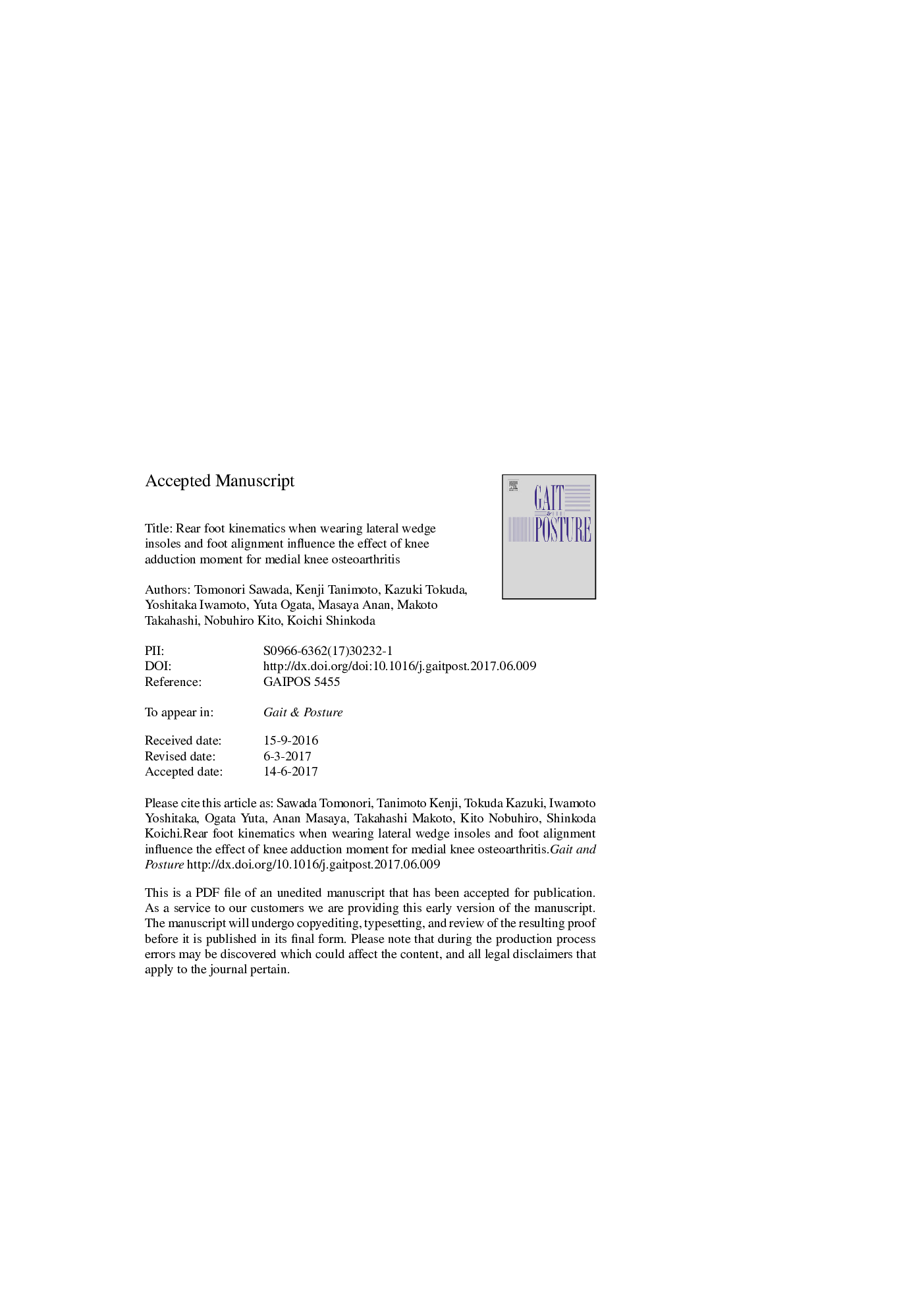| Article ID | Journal | Published Year | Pages | File Type |
|---|---|---|---|---|
| 5707820 | Gait & Posture | 2017 | 16 Pages |
Abstract
Lateral wedge insoles (LWIs) are prescribed for patients with medial knee osteoarthritis to reduce the external knee adduction moment (KAM). However, the biomechanical effects of LWIs are limited in some patients. The purpose of this study was to investigate whether the biomechanical effects of LWIs depend on individual foot alignment and to examine the relationship between change in KAM and changes in foot and ankle biomechanics when wearing LWIs. Twenty-one patients participated in this study. They were categorized into normal or abnormal foot groups based on the foot posture index (FPI). All patients were requested to perform a normal gait under barefoot and LWI conditions. A three-dimensional motion analysis system was used to record 1st and 2nd KAM, knee adduction angular impulse (KAAI), center of pressure displacement, and knee-ground reaction force lever arm. Furthermore, the foot and ankle frontal plane kinematic parameters were evaluated. The 1st KAM was significantly reduced under the LWI condition compared to that under the barefoot condition in the normal foot group. In contrast, there was no significant difference in 1st KAM between both conditions in the abnormal foot group. Decreased rear foot eversion strongly correlated with reduction in the 1st KAM in the normal foot group. These findings suggested that it is helpful to assess individual foot alignment to ensure adequate insole treatment for patients with medial knee osteoarthritis and that decreased rear foot eversion during the early stance phase is significantly involved in the reduction of 1st KAM when wearing LWIs with normal feet.
Related Topics
Health Sciences
Medicine and Dentistry
Orthopedics, Sports Medicine and Rehabilitation
Authors
Tomonori Sawada, Kenji Tanimoto, Kazuki Tokuda, Yoshitaka Iwamoto, Yuta Ogata, Masaya Anan, Makoto Takahashi, Nobuhiro Kito, Koichi Shinkoda,
